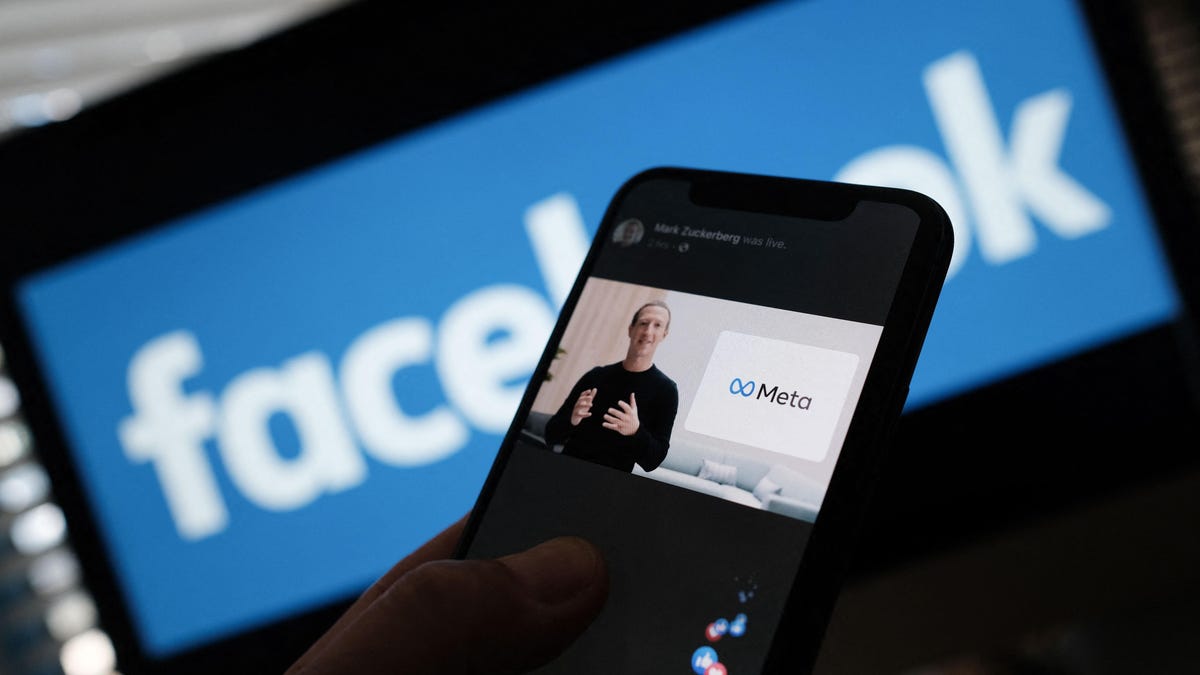Meta Took Down Alleged Chinese and Russian ‘Influence Operations’ Focused on U.S. Politics and Wa... - 5 minutes read

Meta this week said it stepped in to disrupt two online “influence operations,” allegedly originating out of Russia and China. The former marks the “largest and most complex Russian-origin operation,” the company’s moved to disrupt since Russia launched its invasion of Ukraine, while the latter represents the first Meta-disrupted Chinese network focused on U.S. politics ahead of the 2022 midterm elections.
Both of the network disruptions were disclosed in a report Tuesday detailing Meta’s attempts to tackle what it calls “coordinated inauthentic behavior.” According to Meta, these types of activities amount to, “coordinated efforts to manipulate public debate for a strategic goal, in which fake accounts are central to the operation.”
In the Russia case, the alleged influence operation involved 60 fake news websites operating since around May that would post original, pro-Russian content all while carefully impersonating authentic European news sources like Spiegel, The Guardian, and Bild. The fake sites copied the authentic news site’s appearance, occasionally re-posted their authentic content, attached images of genuine reporters to fake articles, and even directly copied the authentic site’s cookie acceptance page. The posts were all clearly pro-Russia, according to Meta, with many criticizing Ukraine’s involvements in the war. Others leaned heavily into content suggesting western sanctions would backfire.
In addition to the “original” articles, the groups purportedly spread their message through memes and YouTube videos posted across a number of online platforms including Facebook, Instagram, Telegram, Twitter, Change.org, and old-school blogging site LiveJournal. In some cases, a handful of those posts were apparently “amplified” by Facebook Pages of Russian embassies in Europe and Asia. The report describes how these groups would create same-name accounts on different platforms which were used to amplify each other in a type of “fake engagement carousel.”
Meta says the Russian operation was unique in that it utilized multiple different types of attacks with varying complexity, with the intended effect of functioning like a type of “smash and grab” against the company’s information environment. While the fake articles and websites required time and attention to details, the boosting of those on social media “took a brute-force approach.”
“The spoofed websites and the use of many languages demanded both technical and linguistic investment,” Meta said. “The amplification on social media, on the other hand, relied primarily on crude ads and fake accounts.”
The report’s authors claim the majority of the accounts involved in these operations were detected and removed by Meta’s automated system before its investigation ever started.
“This was the largest and most complex RU operation we’ve disrupted since Russia’s invasion of Ukraine in February,” Meta Threat Disruption Director David Agranovich said in a statement. “Russian ops aren’t going away, but the last 8 months have shown that concerted defenses, info sharing, and aggressive transparency can blunt their effectiveness.”
China-based network failed to gain traction
The alleged Chinese network operation, by contrast, took far more interest in U.S. politics. Meta says it identified four mostly separate influence efforts targeting the U.S. and some aimed at the Czech Republic. In the U.S. the operations reportedly took place between Fall 2021 and 2022 and targeted users on both sides of the political aisle. Those efforts, which ran across Facebook, Instagram, and WhatsApp, reportedly relied on comments and memes as their main means of engagement. While Meta’s previously intervened to disrupt Chinese actors focused on criticizing the U.S. to international audiences, the company says this was the first Chinese network it disrupted that was focused on U.S. politics ahead of the 2022 midterms.
Those efforts look like they were mostly a big dud. At least, that’s how Meta’s framing it. According to the report, the operation targeting U.S. users were sporadic, posted infrequently and failed to gain any real, meaningful engagement from authentic communities. Most of the posts attributed to the Chinese network were uploaded during regular Chinese business hours meaning they were posted around the same time many U.S. users were asleep.
“Chinese ops we’ve all studied before mainly talked about America to global audiences: US is bad, China is good,” Meta Global Threat Intel Lead Ben Nimmo said in a statement detailing some of the findings.
Overall, while these clusters were small and failed to grow an audience, Nimmo said he viewed them as significant.
“This is the first one I’ve seen w/ such a focus on domestic politicians/issues inc. gun control & abortion, posed as Americans on both sides of political spectrum,” he said.
The mostly failed operation occurred just months after researchers at the Stanford Internet Observatory, identified another so-called influence operation. Rather than originating from Russia or China, however, that report appears to have revealed a long-term U.S. disinformation effort aimed at web users in Russia, China, and Iran.
The accounts in the Stanford report reportedly spread “pro-U.S” narratives in online communities through fake accounts. On Twitter alone, 299,566 tweets were sent by 146 fake accounts between March 2012 and February 2022. Speaking with Gizmodo at the time, Stanford Internet Observatory staffer Shelby Grossman, said the research amounts to one of the clearest examples yet of a “covert, pro-U.S. influence operation.”
Source: Gizmodo.com
Powered by NewsAPI.org